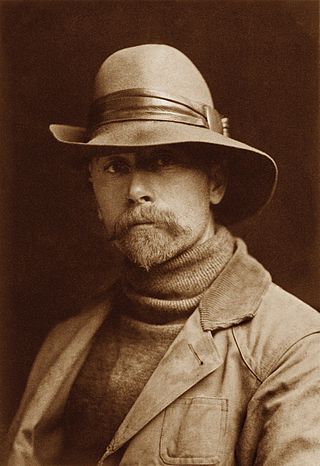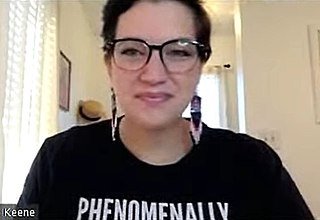
The Puyallup, Spuyalpabš or S’Puyalupubsh are a federally recognized Coast Salish Native American tribe from western Washington state, United States. They were relocated onto reservation lands in what is today Tacoma, Washington, in late 1854, after signing the Treaty of Medicine Creek with the United States. Today they have an enrolled population of 6,700, of whom 3,000 live on the reservation.

The Tulalip Tribes of Washington, formerly known as the Tulalip Tribes of the Tulalip Reservation, is a federally recognized tribe of Duwamish, Snohomish, Snoqualmie, Skagit, Suiattle, Samish, and Stillaguamish people. They are South and Central Coast Salish peoples of indigenous peoples of the Pacific Northwest Coast. Their tribes are located in the mid-Puget Sound region of Washington.

The Suquamish are a Lushootseed-speaking Native American people, located in present-day Washington in the United States. They are a southern Coast Salish people. Today, most Suquamish people are enrolled in the federally recognized Suquamish Tribe, a signatory to the 1855 Treaty of Point Elliott. Chief Seattle, the famous leader of the Suquamish and Duwamish Tribes for which the City of Seattle is named, signed the Point Elliot Treaty on behalf of both Tribes. The Suquamish Tribe owns the Port Madison Indian Reservation.
Lushootseed, also Puget Salish, Puget Sound Salish or Skagit-Nisqually, is a language made up of a dialect continuum of several Salish tribes of modern-day Washington state. Lushootseed is one of the Coast Salish languages, one of two main divisions of the Salishan language family.

The Confederated Tribes of the Umatilla Indian Reservation are the federally recognized confederations of three Sahaptin-speaking Native American tribes who traditionally inhabited the Columbia River Plateau region: the Cayuse, Umatilla, and Walla Walla.

Edward Sherriff Curtis was an American photographer and ethnologist whose work focused on the American West and on Native American people. Sometimes referred to as the "Shadow Catcher", Curtis traveled the United States to document and record the dwindling ways of life of various native tribes through photographs and audio recordings.

Salvage ethnography is the recording of the practices and folklore of cultures threatened with extinction, including as a result of modernization. It is generally associated with the American anthropologist Franz Boas; he and his students aimed to record vanishing Native American cultures. Since the 1960s, anthropologists have used the term as part of a critique of 19th-century ethnography and early modern anthropology.

Several Native American tribes within the United States register motor vehicles and issue license plates to those vehicles.
The Harvard Project on American Indian Economic Development, also known as the Harvard Project, was founded in 1987 at Harvard Kennedy School at Harvard University. It administers tribal awards programs as well as provides support for students and conducting research. The Harvard Project aims to understand and foster the conditions under which sustained, self-determined social and economic development is achieved among American Indian nations through applied research and service.
Janet McCloud was a prominent Native American and indigenous rights activist. Her activism helped lead to the 1974 Boldt Decision, for which she was dubbed "the Rosa Parks of the American Indian Movement." She co-founded Women of All Red Nations (WARN) in 1974. The first convening of the Indigenous Women's Network was in her backyard in Yelm, Washington in August 1985.

The Salish peoples are indigenous peoples of the American and Canadian Pacific Northwest, identified by their use of the Salish languages which diversified out of Proto-Salish between 3,000 and 6,000 years ago.

James "Jimmy" Philip Nelson is an English photographer. He is known for his portraits of tribal and indigenous peoples.
Aaron Carapella is a self-taught cartographer who makes maps of the locations and names of Pre-Columbian Indigenous tribes of North America circa 1490. He is part Cherokee on his mother's side and his grandparents instilled a deep interest in Native American culture. At age 19, he began his map-making research and as of 2014, he has made maps of indigenous tribes with their original names for the continental United States, Canada, and Mexico.

Fawn Sharp is a Native American politician, attorney, and policy advocate who is the current president of the National Congress of American Indians. Prior to serving in this capacity, Sharp served as president of the Quinault Indian Nation, as president of the Affiliated Tribes of Northwest Indians, and as vice president of the National Congress of American Indians.
Matika Lorraine Wilbur, whose indigenous name is Tsa-Tsiq, meaning "She Who Teaches," is a member of the Swinomish and Tulalip tribes of the State of Washington where she was raised in a family of commercial fishermen. Matika received her teaching certification and worked in primary education at The Tulalip Heritage High School for 5 years. There, she experienced firsthand the lack of educational resources to teach indigenous intelligence and dismayed that the curriculum being taught did not provide Native youths with positive imagery and understanding. Thus began the momentum behind Project 562.

Adrienne J. Keene is a Native American academic, writer, and activist. A member of the Cherokee Nation, she is the founder of Native Appropriations, a blog on contemporary Indigenous issues analyzing the way that Indigenous peoples are represented in popular culture, covering issues of cultural appropriation in fashion and music and stereotyping in film and other media. She is also an assistant professor of American Studies and Ethnic Studies at Brown University, where her research focuses on educational outcomes for Native students.
Zoë Marieh Urness is a photographer of Alaskan Tlingit and Cherokee Native American heritage.
Deborah Parker, also known by her native name cicayalc̓aʔ, is an activist and indigenous leader in the United States. A member of the Tulalip Tribes of Washington, she served as its vice-chairwoman from 2012 to 2015 and is, as of July 2018, a board member for Our Revolution and the National Indigenous Women's Resource Center. She is also a co-founder of Indigenous Women Rise.










